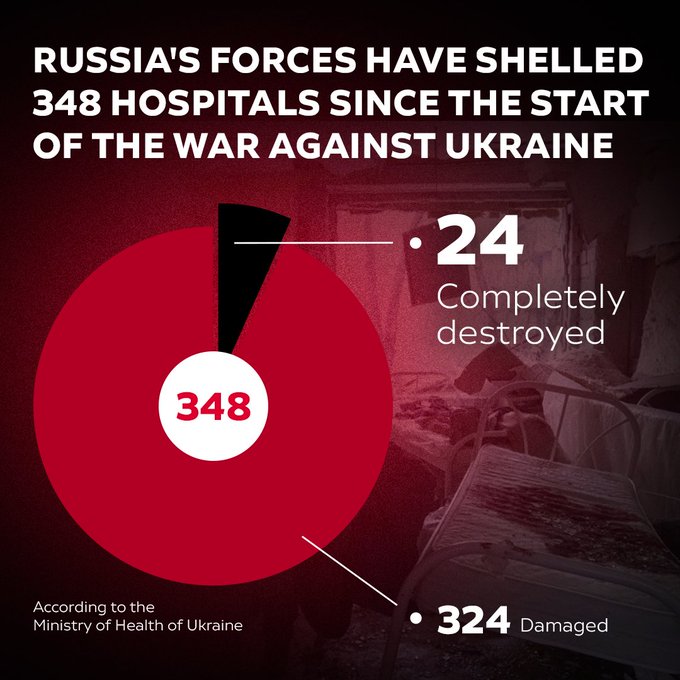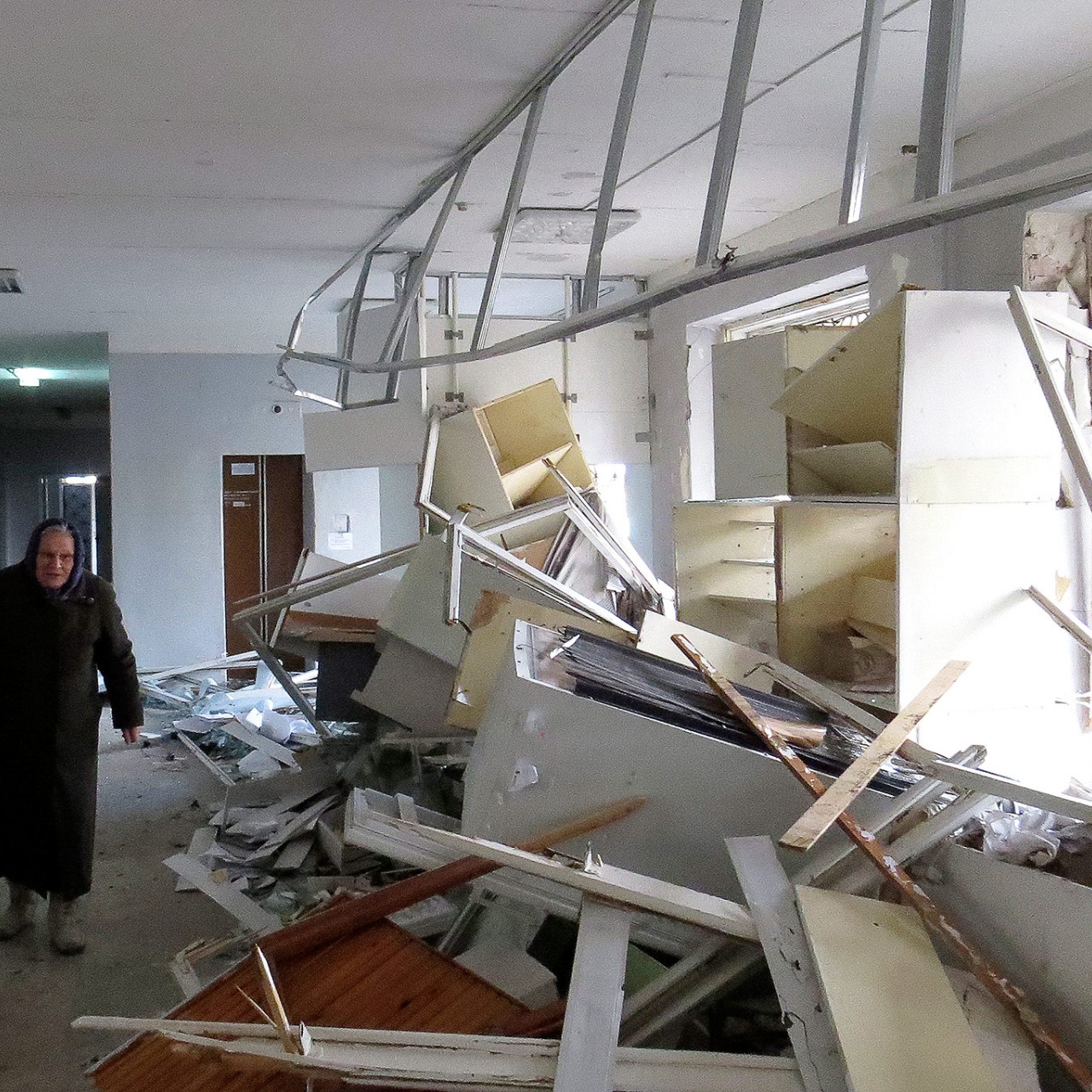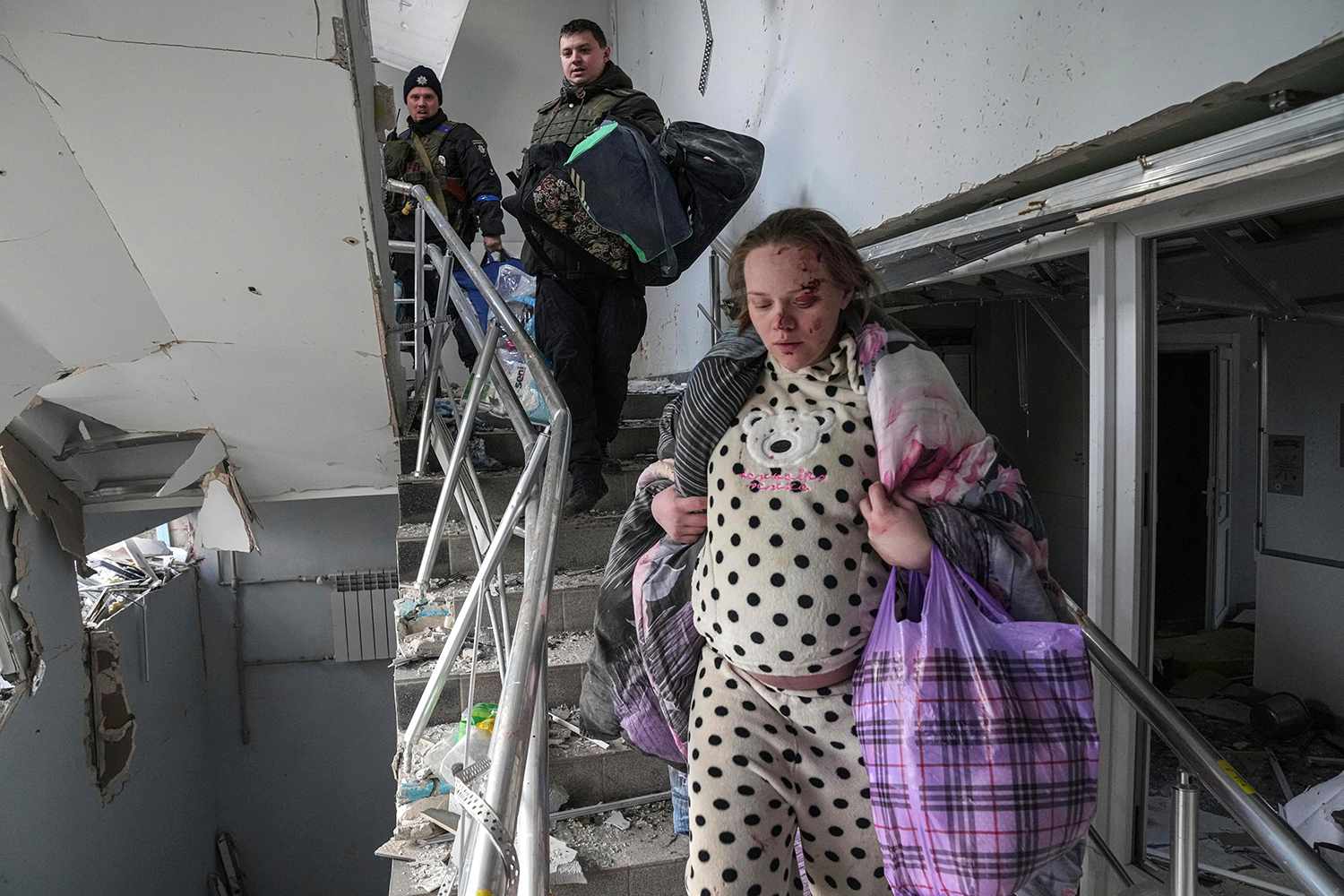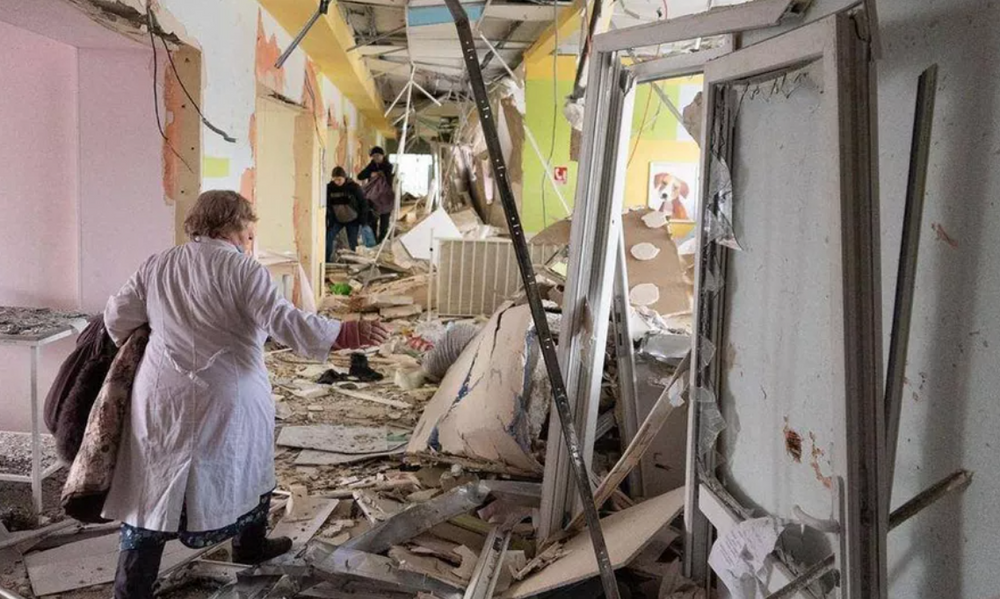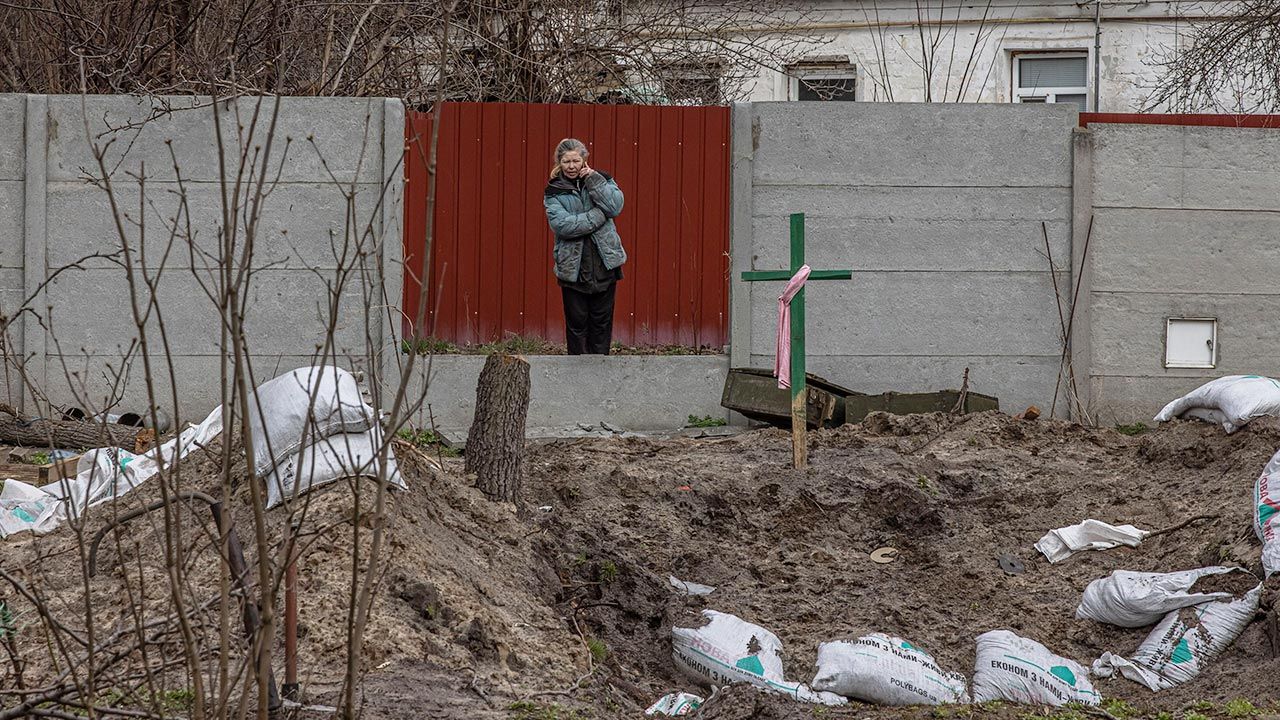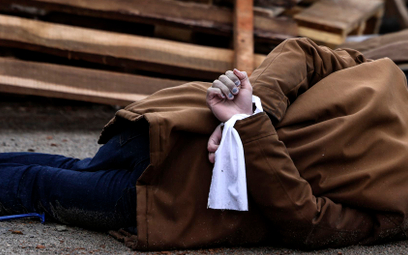Post by Bonobo on Mar 20, 2022 6:57:47 GMT 1
Russian army, demoralised and too scared to fight against the brave Ukrainian soldiers, is purposefully targeting civilians instead, which is a war crime. Russians want to break Ukrainian spirit by random shelling their houses and whole civilian quarters with rockets and artillery.
en.wikipedia.org/wiki/War_crimes_in_the_2022_Russian_invasion_of_Ukraine
According to many specialists, the invasion of Ukraine, part of the Russo-Ukrainian War that started in 2014, violated the Charter of the United Nations prohibition on aggression and constitutes a crime of aggression according to international criminal law. Many indiscriminate attacks on civilian areas by Russian forces have occurred during the 2022 Russian invasion of Ukraine, which may constitute war crimes.
Crime of aggression
Main article: Legality of 2022 Russian invasion of Ukraine
The invasion of Ukraine violated the Charter of the United Nations prohibition on aggression and constitutes a crime of aggression according to international criminal law. There are significant procedural obstacles to prosecuting Russian leaders for the crime for aggression at the International Criminal Court, but the crime of aggression can be prosecuted in countries that allow universal jurisdiction over such crimes.[3][4][5]
Attacks on civilian areas
On 25 February 2022, Amnesty International stated that Russian forces had "shown a blatant disregard for civilian lives by using ballistic missiles and other explosive weapons with wide area effects in densely populated areas". In addition, Russia has falsely claimed to have only used precision-guided weapons. Three documented attacks, in Vuhledar, Kharkiv and Uman, Amnesty International stated were indiscriminate and could constitute war crimes.[1] The Uman attack occurred at 07:00 (UTC) on 24 February, killing one civilian and damaging a restaurant. The Kharkiv attack, at 08:00, landed between apartment buildings and killed one civilian.[1]
Two civilian merchant ships flying under the flags of neutral countries were shelled in the Black Sea on 25 February. Russian warships shelled the Moldovan-flagged chemical tanker MV Millennial Spirit and the Panamanian-flagged Japanese-owned cargo ship Namura Queen.[6][7]
On 1 and 2 March, the Russian artillery targeted a densely populated neighbourhood of Mariupol, shelling it for nearly 15 hours. The neighbourhood was significantly destroyed as a result, with deputy mayor Sergei Orlov reporting that "at least hundreds of people [were] dead."[8][9]
On 3 March, the Office of the United Nations High Commissioner for Human Rights released a statement saying that it had recorded at least 1006 civilian casualties in the first week of the invasion, but that it believed that "the real figures are considerably higher."[10]
On 6 March, the World Health Organization released a statement saying that it had evidence that multiple health care centres in Ukraine had been attacked, with Director-General Tedros Adhanom Ghebreyesus saying that "attacks on healthcare facilities or workers breach medical neutrality and are violations of international humanitarian law."[11]
Use of cluster munitions
The Vuhledar attack, at 10:30 (UTC) on 24 February, was the result of a 9M79 Tochka missile, the missile landed next to a hospital and killed four civilians. Amnesty International describe its analysis as "irrefutable evidence of violations of international humanitarian law and international human rights law" by Russian forces.[1] Human Rights Watch (HRW) found that the Vuhledar hospital attack used an 9N123 cluster munition, a type of weapon that is prohibited by most states under the Convention on Cluster Munitions because of its immediate and long-term danger to civilians. The 9N123 contains fifty 9N24 individual submunitions, which each split into 316 bomblets. HRW based its analysis on contacts with hospital and municipal administrations and multiple photographic evidence. HRW called for Russian forces to stop making "unlawful attacks with weapons that indiscriminately kill and maim."[12] The press secretary of the Russian Federation Dmitry Peskov denied this information, saying that such types of ammunition are in service with the Armed Forces of Ukraine.[13]
On 27 February, Amnesty International stated that it had analysed evidence showing that Russian cluster munitions from a 220 mm BM-27 Uragan rocket had hit a preschool in Okhtyrka where civilians were taking shelter on 25 February, killing three, including a child. UAV film showed four hits on the roof of the preschool, three on the ground next to the school, two injured or dead civilians, and pools of blood. Amnesty International analysed 65 photos and videos of the event and interviewed local residents.[14] Bellingcat stated that remains of the 9M27K rocket were found 200 metres east of the kindergarten. Russian forces were located west of Okhtyrka. Amnesty described the rocket type as "unguided and notoriously inaccurate", and described the attack as a potential war crime that should be investigated.[14]
On 4 March, Human Rights Watch stated that "Russian forces fired cluster munitions into at least three residential areas in Kharkiv" on 28 February, killing at least three civilians.[15]
Targeting of humanitarian corridors
Photo distributed by the Ukrainian Ministry of Internal Affairs purportedly showing the victim of a Russian attack in Mariupol in March 2022
During the Siege of Mariupol, a number of attempts to establish a humanitarian evacuation corridor to evacuate civilians from the city have been made, but have failed due to the corridor being targeted by Russian forces. On 5 March, a five-hour ceasefire was declared, but evacuations were quickly halted after shelling continued during the declared time.[16] The next day, the International Committee of the Red Cross (ICRC) announced that a second attempt to establish an evacuation corridor had failed.[17] On 7 March, the ICRC announced that it had found that one of the routes listed for evacuations during a ceasefire had been mined.[18] On 8 March, Human Rights Watch released a statement saying attacks on the evacuation corridor potentially indicated that "Russian forces violated their obligations under international humanitarian law,"[19] though New York Times reporters on the scene confirmed that Ukrainian forces fired mortar rounds in the direction of the Russian forces from a military position about 180 meters from the location.[20]
On March 7, during the Siege of Mariupol, the U.S. ambassador to the Organization for Security and Co-operation in Europe, Michael Carpenter, described two incidents that occurred in Mariupol on March 5 and 6 as war crimes. He stated that on both dates, Russian forces bombed agreed-upon evacuation corridors while civilians were trying to use them.[21]
Thermobaric weapons
On 28 February, Oksana Markarova, the Ukrainian ambassador to the United States, stated that Russian forces used a thermobaric bomb in Okhtyrka.[22][23][24] International law does not prohibit the use of thermobaric munitions, fuel-air explosive devices, or vacuum bombs against military targets.[25][26] Their use against civilian populations may be banned by the United Nations (UN) Convention on Certain Conventional Weapons (CCW).[27] Markarova claimed that the use of thermobaric weapons is in violation of the Geneva Conventions.[28][29][30] White House Press Secretary Jen Psaki said she had seen reports but did not have confirmation that Russia had used such weapons. "If that were true, it would potentially be a war crime," she told a press briefing.[22] The attack destroyed a Ukrainian military base, killing 70 soldiers.
Mariupol Hospital airstrike
Main article: Mariupol hospital airstrike
On 9 March, Russian forces bombed a maternity and children's hospital in Mariupol.[46] The hospital was destroyed.[47] three people were killed, including a young girl.[48] British prime minister Boris Johnson described the bombing as "depraved".[49] Dmytro Kuleba called the bombing a "petrifying war crime".[50]
The city was cut off from electricity, food and water. A 6-year-old girl was reported to have died from dehydration under the ruins of her home in Mauripol on March 8.[51]
Mariupol theatre airstrike
Main article: Mariupol theatre airstrike
On 16 March, Russian Armed Forces bombed the Donetsk Regional Drama Theatre in Mariupol, Ukraine, which was in use as an air raid shelter; Ukrainian authorities stated it was holding up to 1,200 civilians during the siege of Mariupol.[52] The theatre was largely destroyed in the attack, which Ukrainian authorities described as a war crime.[53] Casualty figures are currently not known; people were trapped under the burning rubble of the collapsed theatre following the attack, but ongoing shelling in the area has complicated recovery efforts.[53][54]
The theatre is one of a number of Ukrainian heritage and cultural sites that have been deliberately targeted and destroyed by invading Russian forces.[54] Satellite images of the theatre taken on 14 March show the word "children" spelled out in Russian in two locations outside the theatre in an attempt to identify it to invading forces as a civilian air raid shelter containing children and not a military target.[53] Mariupol city council officials stated that the theatre was the largest single air raid shelter in the city, and at the time of the attack it contained only women and children.[54]
In response to the attack, Russia accused the Ukraine-backed Azov Battalion of carrying out the theatre bombing, without providing evidence.[53]
15 March, Pyotr Andryushchenko, an adviser to the city government, estimated that around 80 percent of the residential housing stock had been destroyed, and that the total number of civilians killed could be as high as 20,000



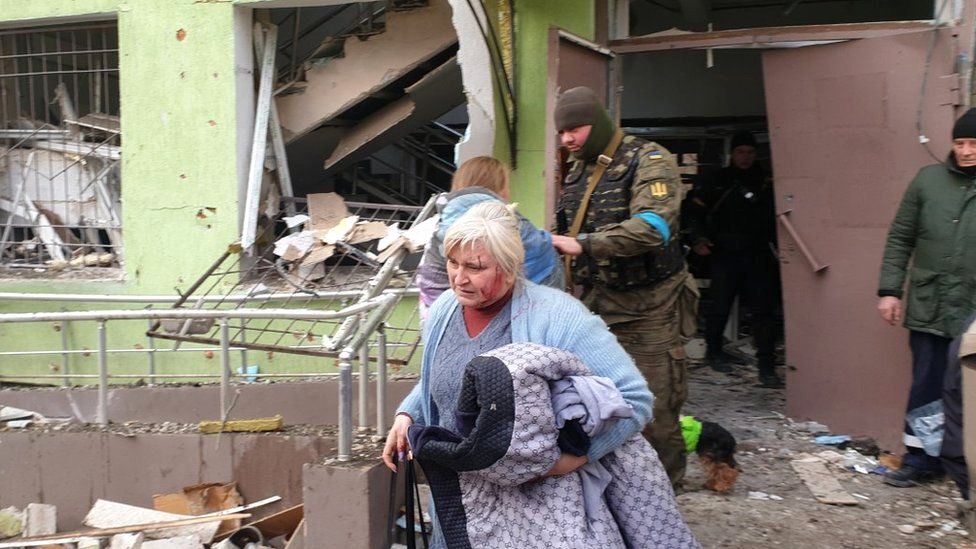
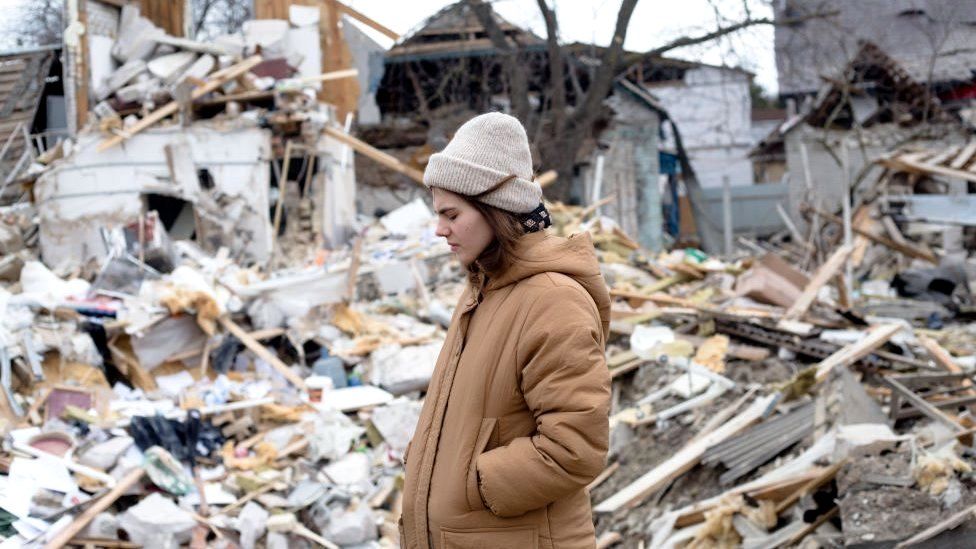
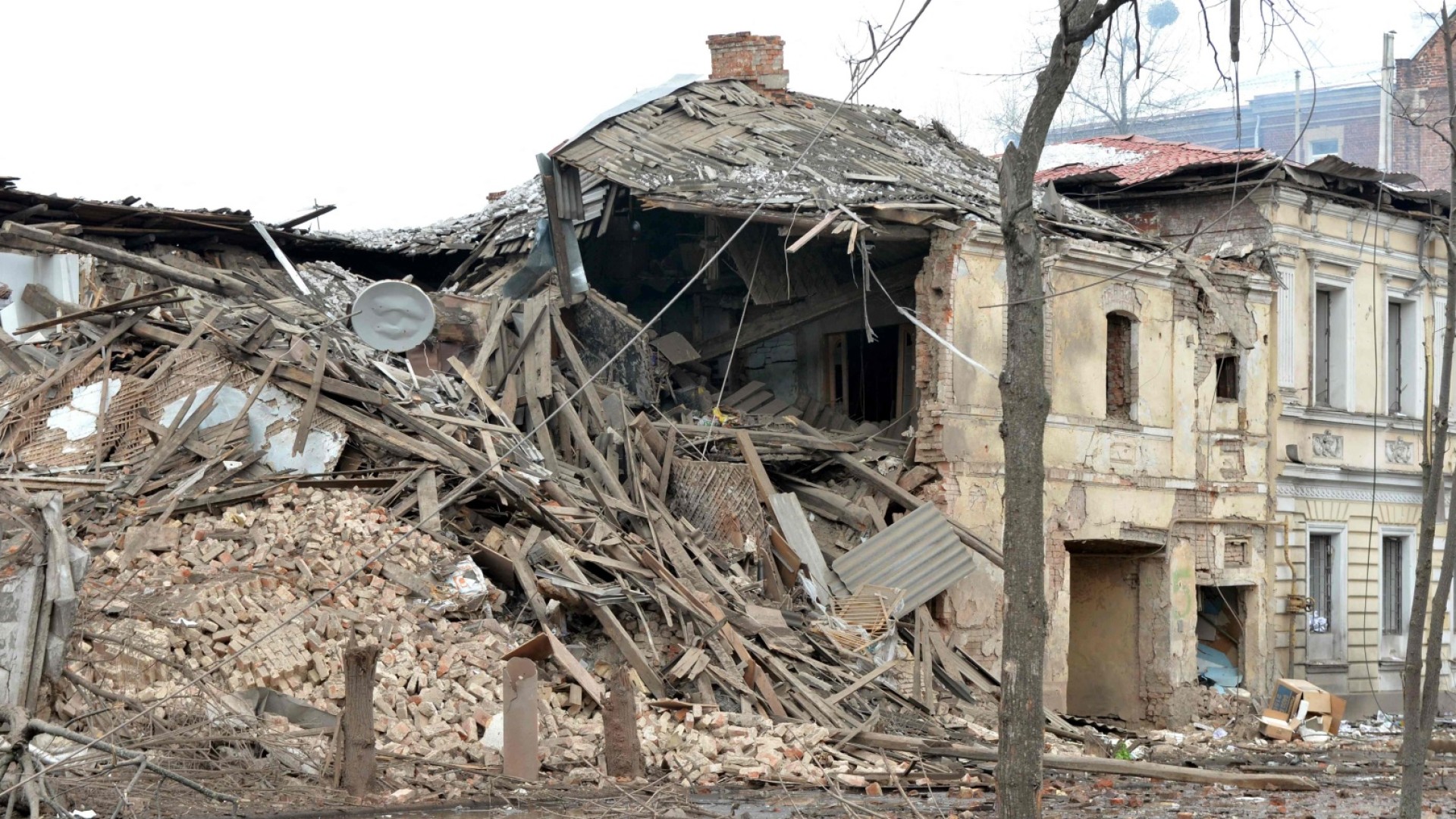
en.wikipedia.org/wiki/War_crimes_in_the_2022_Russian_invasion_of_Ukraine
According to many specialists, the invasion of Ukraine, part of the Russo-Ukrainian War that started in 2014, violated the Charter of the United Nations prohibition on aggression and constitutes a crime of aggression according to international criminal law. Many indiscriminate attacks on civilian areas by Russian forces have occurred during the 2022 Russian invasion of Ukraine, which may constitute war crimes.
Crime of aggression
Main article: Legality of 2022 Russian invasion of Ukraine
The invasion of Ukraine violated the Charter of the United Nations prohibition on aggression and constitutes a crime of aggression according to international criminal law. There are significant procedural obstacles to prosecuting Russian leaders for the crime for aggression at the International Criminal Court, but the crime of aggression can be prosecuted in countries that allow universal jurisdiction over such crimes.[3][4][5]
Attacks on civilian areas
On 25 February 2022, Amnesty International stated that Russian forces had "shown a blatant disregard for civilian lives by using ballistic missiles and other explosive weapons with wide area effects in densely populated areas". In addition, Russia has falsely claimed to have only used precision-guided weapons. Three documented attacks, in Vuhledar, Kharkiv and Uman, Amnesty International stated were indiscriminate and could constitute war crimes.[1] The Uman attack occurred at 07:00 (UTC) on 24 February, killing one civilian and damaging a restaurant. The Kharkiv attack, at 08:00, landed between apartment buildings and killed one civilian.[1]
Two civilian merchant ships flying under the flags of neutral countries were shelled in the Black Sea on 25 February. Russian warships shelled the Moldovan-flagged chemical tanker MV Millennial Spirit and the Panamanian-flagged Japanese-owned cargo ship Namura Queen.[6][7]
On 1 and 2 March, the Russian artillery targeted a densely populated neighbourhood of Mariupol, shelling it for nearly 15 hours. The neighbourhood was significantly destroyed as a result, with deputy mayor Sergei Orlov reporting that "at least hundreds of people [were] dead."[8][9]
On 3 March, the Office of the United Nations High Commissioner for Human Rights released a statement saying that it had recorded at least 1006 civilian casualties in the first week of the invasion, but that it believed that "the real figures are considerably higher."[10]
On 6 March, the World Health Organization released a statement saying that it had evidence that multiple health care centres in Ukraine had been attacked, with Director-General Tedros Adhanom Ghebreyesus saying that "attacks on healthcare facilities or workers breach medical neutrality and are violations of international humanitarian law."[11]
Use of cluster munitions
The Vuhledar attack, at 10:30 (UTC) on 24 February, was the result of a 9M79 Tochka missile, the missile landed next to a hospital and killed four civilians. Amnesty International describe its analysis as "irrefutable evidence of violations of international humanitarian law and international human rights law" by Russian forces.[1] Human Rights Watch (HRW) found that the Vuhledar hospital attack used an 9N123 cluster munition, a type of weapon that is prohibited by most states under the Convention on Cluster Munitions because of its immediate and long-term danger to civilians. The 9N123 contains fifty 9N24 individual submunitions, which each split into 316 bomblets. HRW based its analysis on contacts with hospital and municipal administrations and multiple photographic evidence. HRW called for Russian forces to stop making "unlawful attacks with weapons that indiscriminately kill and maim."[12] The press secretary of the Russian Federation Dmitry Peskov denied this information, saying that such types of ammunition are in service with the Armed Forces of Ukraine.[13]
On 27 February, Amnesty International stated that it had analysed evidence showing that Russian cluster munitions from a 220 mm BM-27 Uragan rocket had hit a preschool in Okhtyrka where civilians were taking shelter on 25 February, killing three, including a child. UAV film showed four hits on the roof of the preschool, three on the ground next to the school, two injured or dead civilians, and pools of blood. Amnesty International analysed 65 photos and videos of the event and interviewed local residents.[14] Bellingcat stated that remains of the 9M27K rocket were found 200 metres east of the kindergarten. Russian forces were located west of Okhtyrka. Amnesty described the rocket type as "unguided and notoriously inaccurate", and described the attack as a potential war crime that should be investigated.[14]
On 4 March, Human Rights Watch stated that "Russian forces fired cluster munitions into at least three residential areas in Kharkiv" on 28 February, killing at least three civilians.[15]
Targeting of humanitarian corridors
Photo distributed by the Ukrainian Ministry of Internal Affairs purportedly showing the victim of a Russian attack in Mariupol in March 2022
During the Siege of Mariupol, a number of attempts to establish a humanitarian evacuation corridor to evacuate civilians from the city have been made, but have failed due to the corridor being targeted by Russian forces. On 5 March, a five-hour ceasefire was declared, but evacuations were quickly halted after shelling continued during the declared time.[16] The next day, the International Committee of the Red Cross (ICRC) announced that a second attempt to establish an evacuation corridor had failed.[17] On 7 March, the ICRC announced that it had found that one of the routes listed for evacuations during a ceasefire had been mined.[18] On 8 March, Human Rights Watch released a statement saying attacks on the evacuation corridor potentially indicated that "Russian forces violated their obligations under international humanitarian law,"[19] though New York Times reporters on the scene confirmed that Ukrainian forces fired mortar rounds in the direction of the Russian forces from a military position about 180 meters from the location.[20]
On March 7, during the Siege of Mariupol, the U.S. ambassador to the Organization for Security and Co-operation in Europe, Michael Carpenter, described two incidents that occurred in Mariupol on March 5 and 6 as war crimes. He stated that on both dates, Russian forces bombed agreed-upon evacuation corridors while civilians were trying to use them.[21]
Thermobaric weapons
On 28 February, Oksana Markarova, the Ukrainian ambassador to the United States, stated that Russian forces used a thermobaric bomb in Okhtyrka.[22][23][24] International law does not prohibit the use of thermobaric munitions, fuel-air explosive devices, or vacuum bombs against military targets.[25][26] Their use against civilian populations may be banned by the United Nations (UN) Convention on Certain Conventional Weapons (CCW).[27] Markarova claimed that the use of thermobaric weapons is in violation of the Geneva Conventions.[28][29][30] White House Press Secretary Jen Psaki said she had seen reports but did not have confirmation that Russia had used such weapons. "If that were true, it would potentially be a war crime," she told a press briefing.[22] The attack destroyed a Ukrainian military base, killing 70 soldiers.
Mariupol Hospital airstrike
Main article: Mariupol hospital airstrike
On 9 March, Russian forces bombed a maternity and children's hospital in Mariupol.[46] The hospital was destroyed.[47] three people were killed, including a young girl.[48] British prime minister Boris Johnson described the bombing as "depraved".[49] Dmytro Kuleba called the bombing a "petrifying war crime".[50]
The city was cut off from electricity, food and water. A 6-year-old girl was reported to have died from dehydration under the ruins of her home in Mauripol on March 8.[51]
Mariupol theatre airstrike
Main article: Mariupol theatre airstrike
On 16 March, Russian Armed Forces bombed the Donetsk Regional Drama Theatre in Mariupol, Ukraine, which was in use as an air raid shelter; Ukrainian authorities stated it was holding up to 1,200 civilians during the siege of Mariupol.[52] The theatre was largely destroyed in the attack, which Ukrainian authorities described as a war crime.[53] Casualty figures are currently not known; people were trapped under the burning rubble of the collapsed theatre following the attack, but ongoing shelling in the area has complicated recovery efforts.[53][54]
The theatre is one of a number of Ukrainian heritage and cultural sites that have been deliberately targeted and destroyed by invading Russian forces.[54] Satellite images of the theatre taken on 14 March show the word "children" spelled out in Russian in two locations outside the theatre in an attempt to identify it to invading forces as a civilian air raid shelter containing children and not a military target.[53] Mariupol city council officials stated that the theatre was the largest single air raid shelter in the city, and at the time of the attack it contained only women and children.[54]
In response to the attack, Russia accused the Ukraine-backed Azov Battalion of carrying out the theatre bombing, without providing evidence.[53]
15 March, Pyotr Andryushchenko, an adviser to the city government, estimated that around 80 percent of the residential housing stock had been destroyed, and that the total number of civilians killed could be as high as 20,000













